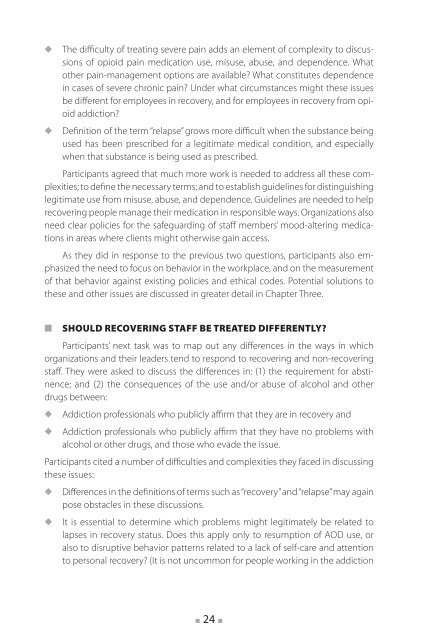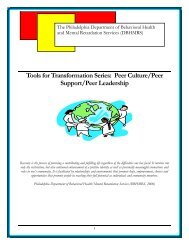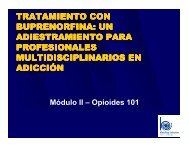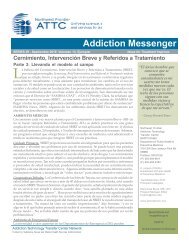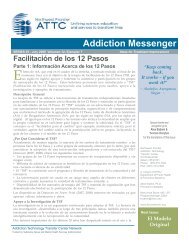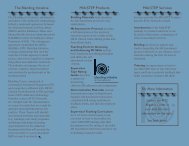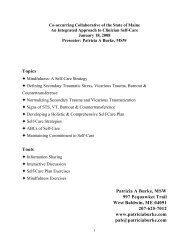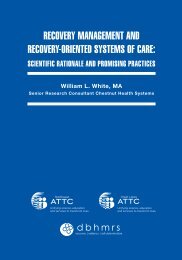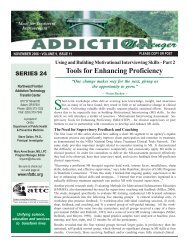alcohol and other drug problems among addiction professionals
alcohol and other drug problems among addiction professionals
alcohol and other drug problems among addiction professionals
You also want an ePaper? Increase the reach of your titles
YUMPU automatically turns print PDFs into web optimized ePapers that Google loves.
◆◆The difficulty of treating severe pain adds an element of complexity to discussionsof opioid pain medication use, misuse, abuse, <strong>and</strong> dependence. What<strong>other</strong> pain-management options are available? What constitutes dependencein cases of severe chronic pain? Under what circumstances might these issuesbe different for employees in recovery, <strong>and</strong> for employees in recovery from opioid<strong>addiction</strong>?Definition of the term “relapse” grows more difficult when the substance beingused has been prescribed for a legitimate medical condition, <strong>and</strong> especiallywhen that substance is being used as prescribed.Participants agreed that much more work is needed to address all these complexities;to define the necessary terms; <strong>and</strong> to establish guidelines for distinguishinglegitimate use from misuse, abuse, <strong>and</strong> dependence. Guidelines are needed to helprecovering people manage their medication in responsible ways. Organizations alsoneed clear policies for the safeguarding of staff members’ mood-altering medicationsin areas where clients might <strong>other</strong>wise gain access.As they did in response to the previous two questions, participants also emphasizedthe need to focus on behavior in the workplace, <strong>and</strong> on the measurementof that behavior against existing policies <strong>and</strong> ethical codes. Potential solutions tothese <strong>and</strong> <strong>other</strong> issues are discussed in greater detail in Chapter Three.nShould Recovering Staff Be Treated Differently?Participants’ next task was to map out any differences in the ways in whichorganizations <strong>and</strong> their leaders tend to respond to recovering <strong>and</strong> non-recoveringstaff. They were asked to discuss the differences in: (1) the requirement for abstinence;<strong>and</strong> (2) the consequences of the use <strong>and</strong>/or abuse of <strong>alcohol</strong> <strong>and</strong> <strong>other</strong><strong>drug</strong>s between:◆◆Addiction <strong>professionals</strong> who publicly affirm that they are in recovery <strong>and</strong>Addiction <strong>professionals</strong> who publicly affirm that they have no <strong>problems</strong> with<strong>alcohol</strong> or <strong>other</strong> <strong>drug</strong>s, <strong>and</strong> those who evade the issue.Participants cited a number of difficulties <strong>and</strong> complexities they faced in discussingthese issues:◆◆Differences in the definitions of terms such as “recovery” <strong>and</strong> “relapse” may againpose obstacles in these discussions.It is essential to determine which <strong>problems</strong> might legitimately be related tolapses in recovery status. Does this apply only to resumption of AOD use, oralso to disruptive behavior patterns related to a lack of self-care <strong>and</strong> attentionto personal recovery? (It is not uncommon for people working in the <strong>addiction</strong>n 24 n


